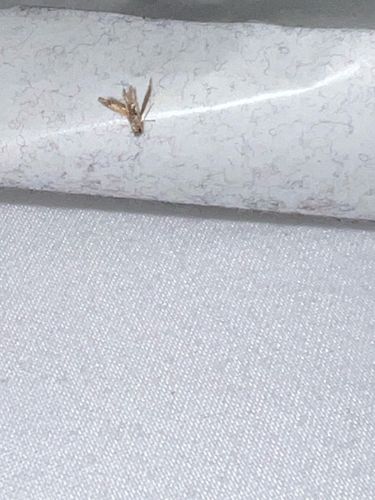Clothing Moth
Scientific Name: Tineola bisselliella or Tinea pellionella (Common Clothes Moth or Casemaking Clothes Moth, respectively - identification to species level from image is difficult but it is clearly a clothes moth)
Order & Family: Lepidoptera (Moths and Butterflies), Tineidae (Fungus Moths and Clothes Moths)
Size: Adults typically 0.5-1 cm (0.2-0.4 inches) in length, with a wingspan of 1-2 cm (0.4-0.8 inches). Larvae can vary in size but are usually up to 1.3 cm (0.5 inches) long.

Natural Habitat
Indoors, commonly found in dark, undisturbed areas such as closets, attics, storage chests, and behind furniture, where natural fibers are stored.
Diet & Feeding
Larvae primarily feed on natural fibers such as wool, fur, silk, feathers, and sometimes cotton or synthetic blends soiled with food or sweat. Adult moths do not feed.
Behavior Patterns
Adult moths are nocturnal and are attracted to light. Females lay eggs on suitable food sources. Larvae are typically hidden within their food source, creating tunnels as they feed. They undergo pupation before emerging as adults.
Risks & Benefits
Potential risks include significant damage to clothing, carpets, upholstered furniture, and other items made of natural fibers. They do not pose direct health risks to humans. They offer no known significant benefits to the ecosystem.
Identified on: 8/31/2025